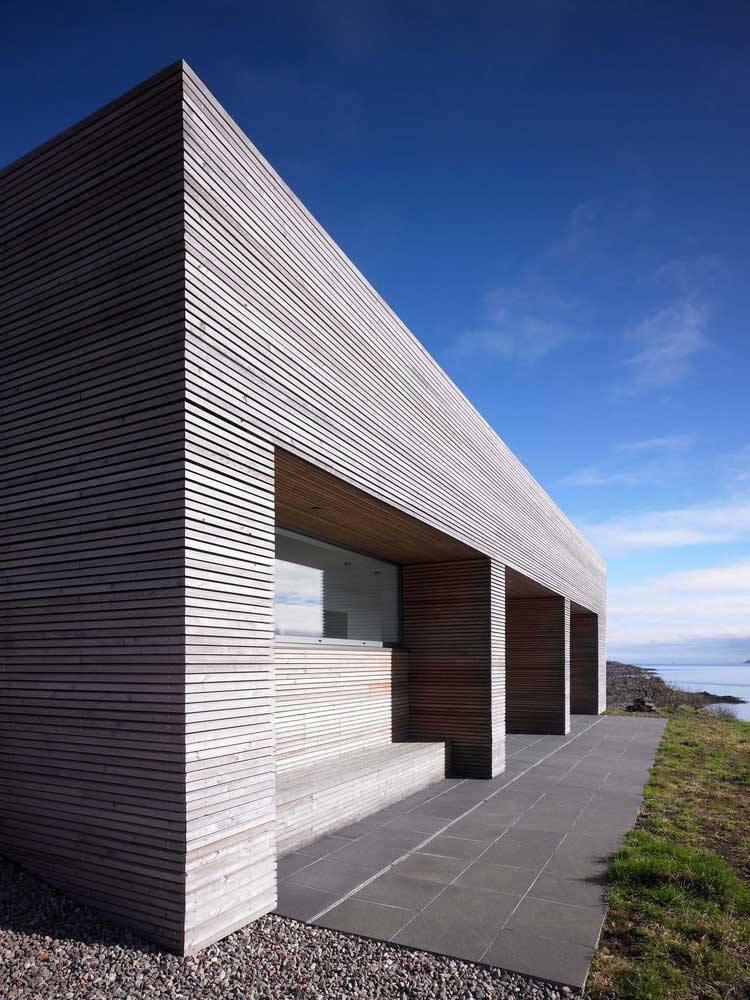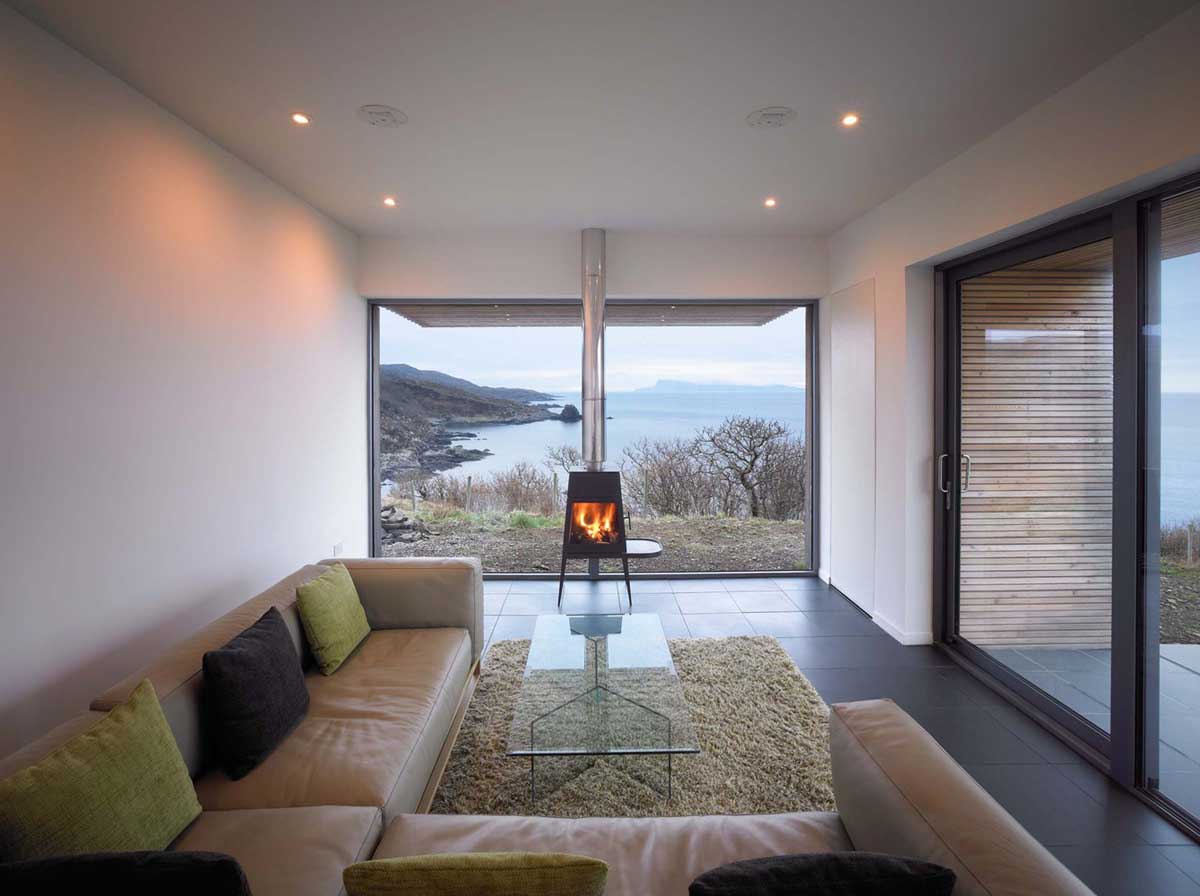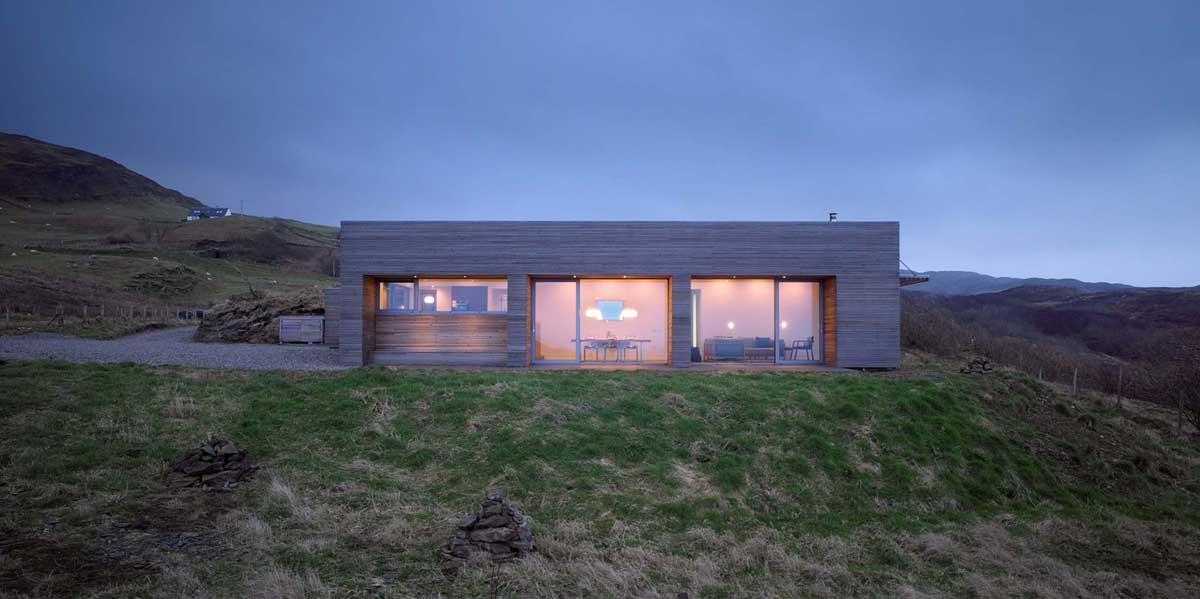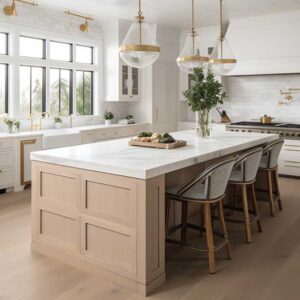Scotland, with its rugged coastlines, misty hills, and deep-rooted history, has always been a land of enchantment. Its architecture, deeply influenced by the surrounding nature, tells tales of tradition meeting modernity. One such tale is that of the larch cladding walls, a material that has come to define many Scottish coastal homes. In the heart of Skye, on the Scottish West Coast, stands a testament to this fusion: a modern dwelling that seamlessly blends with its breathtaking surroundings, thanks to its larch-clad exterior.



The Essence of Larch in Scottish Architecture
Larch, a durable and robust wood, has been a favorite in Scottish architecture for ages. Its natural resistance to decay makes it ideal for unpredictable and often harsh coastal weather. But beyond its durability, larch offers an aesthetic appeal that’s hard to match.
Over time, larch turns a beautiful silver-gray, mirroring the misty Scottish skies and rocky shores. This natural aging process allows homes to blend seamlessly with their environment, creating a harmonious balance between man-made structures and nature.
Furthermore, the grain and texture of larch add depth and character to homes. Each plank tells a story, reflecting the tree’s history from which it came, making every home unique and deeply rooted in the Scottish landscape.

Incorporating Modern Design with Larch Cladding
The house at Aird of Sleat, Skye, is a prime example of how modern design can incorporate traditional materials. The larch cladding walls of this home not only offer protection against the elements but also provide a contemporary, sleek appearance.
The vertical orientation of the cladding adds a sense of height, making the home appear grander while allowing it to maintain a minimalist aesthetic. This design choice reflects the towering cliffs and vast skies of the Scottish coast, bringing a piece of the landscape into the architectural design.
Moreover, the larch cladding, with its natural tones, contrasts beautifully with the modern glass elements of the home. This juxtaposition of materials creates a dynamic visual appeal, showcasing how traditional and contemporary elements can coexist in harmony.



Larch Cladding: A Sustainable Choice
In today’s world, sustainability is at the forefront of architectural decisions. Larch cladding walls not only offer aesthetic and functional benefits but also stand as an eco-friendly choice.
Being a locally sourced material, larch reduces the carbon footprint associated with transportation. Additionally, as a renewable resource, it promotes sustainable forestry practices, ensuring that the beauty of the Scottish landscapes remains preserved for future generations.
Furthermore, larch’s natural insulating properties make it an energy-efficient choice. Homes clad in larch benefit from better temperature regulation, reducing the need for artificial heating or cooling and leading to energy savings.




The Legacy of Larch in Coastal Homes
While larch has been a part of Scottish architecture for ages, its relevance in modern design is a testament to its timeless appeal. Coastal homes, with their larch cladding, stand as beacons of tradition, showcasing Scotland’s commitment to preserving its heritage.
These homes, with their silver-gray exteriors, become one with the landscape, reflecting the colors of the sea, sky, and cliffs. They stand as symbols of resilience, braving the elements year after year, and aging gracefully.
As more architects and homeowners recognize the benefits and beauty of larch, it continues to shape the narrative of Scottish coastal homes, ensuring that the legacy of this remarkable material lives on.

Larch-cladding walls, with their durability, beauty, and sustainability, truly define Scottish coastal homes. They bridge the gap between the past and the present, allowing modern dwellings like the one at Aird of Sleat, Skye, to resonate with the rich history and natural beauty of Scotland. As the larch ages and turns silver-gray, it tells a story of nature, tradition, and innovation coming together in perfect harmony.












